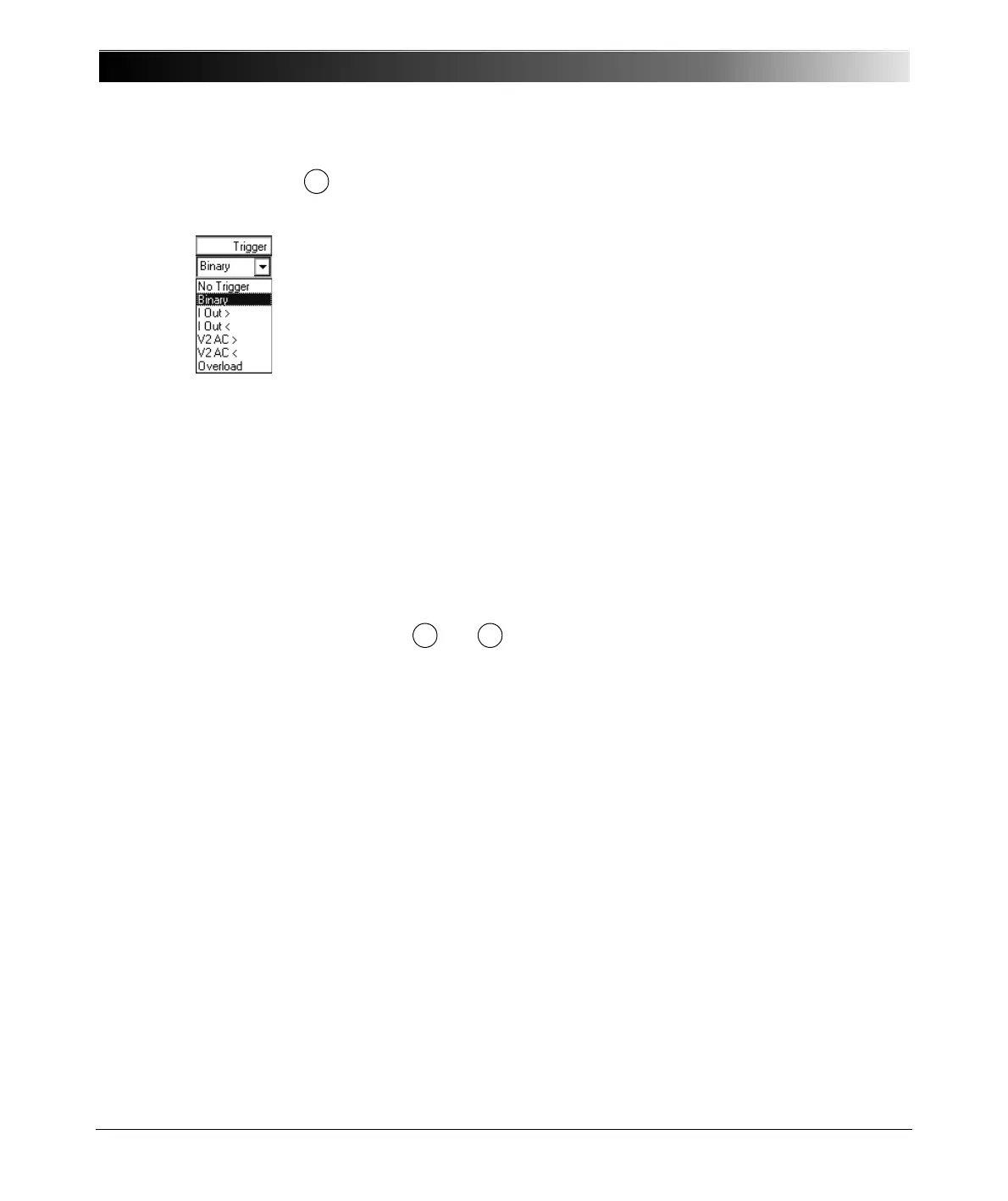CPC 100 V1.41
8 - 6
For each state, a trigger signal can be specified to prematurely terminate
this state and execute the next one. If you move to the "Trigger" cell and
press the handwheel, the cell turns into a combo box.
The following trigger conditions are available for each state:
• No Trigger: the state runs for the pre-defined period of time, no trigger
signal will terminate this state.
• Binary: a trigger signal is fed into the Binary trigger input Bin In. The
state is terminated as soon as this signal occurs.
• IOut>: as soon as the output current exceeds a certain threshold value
(to define in column "Thresh"), the state is terminated.
• IOut<: as soon as the output current falls below a certain threshold
value (to define in column "Thresh"), the state is terminated.
• V2 AC >: as soon as the signal connected to the low level voltage
measuring input V2AC (0...3V AC) exceeds a certain threshold value
(to define in column "Thresh"), the state is terminated.
• V2 AC <: as soon as the signal connected to the low level voltage
measuring input V2AC (0...3V AC) falls below a certain threshold
value (to define in column "Thresh"), the state is terminated.
The availability of the trigger signals depends on the selected values
set at and of the measurement table (refer to Figure 5).
Note: Since the determination of the r.m.s. value requires some
hundred milliseconds (
τ ≈ 150ms), do not use this trigger condition for
measurements in millisecond ranges.
• Overload: the state terminates as soon as an Overload condition
occurs at the selected output.
What is an "Overload" trigger?
–At the 800A AC output, an overload trigger is a condition in which
the set current cannot be reached any longer, for example,
because of an opening contact or circuit breaker.
Note: Current values
< 50A do not initiate an "Overload" when the
current circuit opens. Therefore, if you use the trigger condition
"Overload", chose a nominal current value of
≥ 50A.
